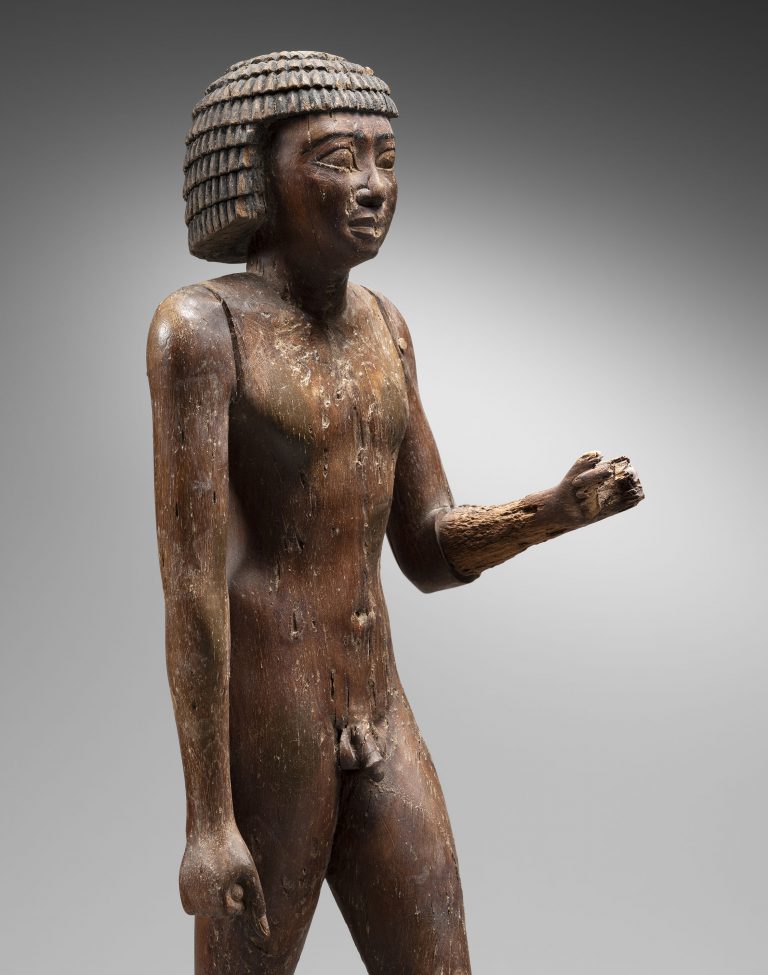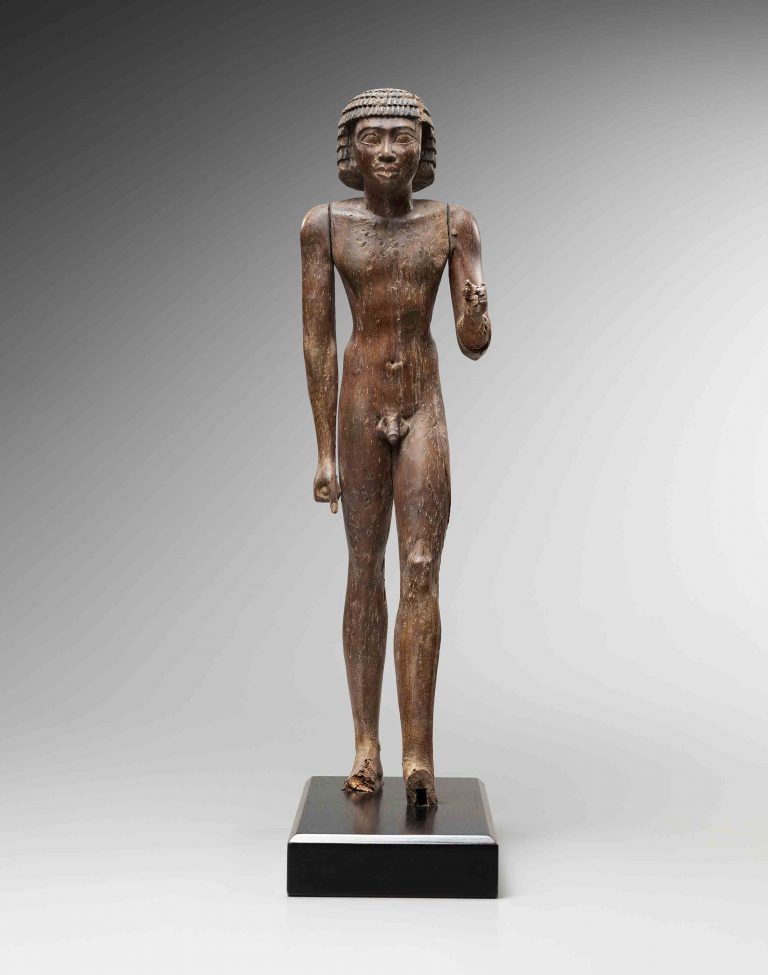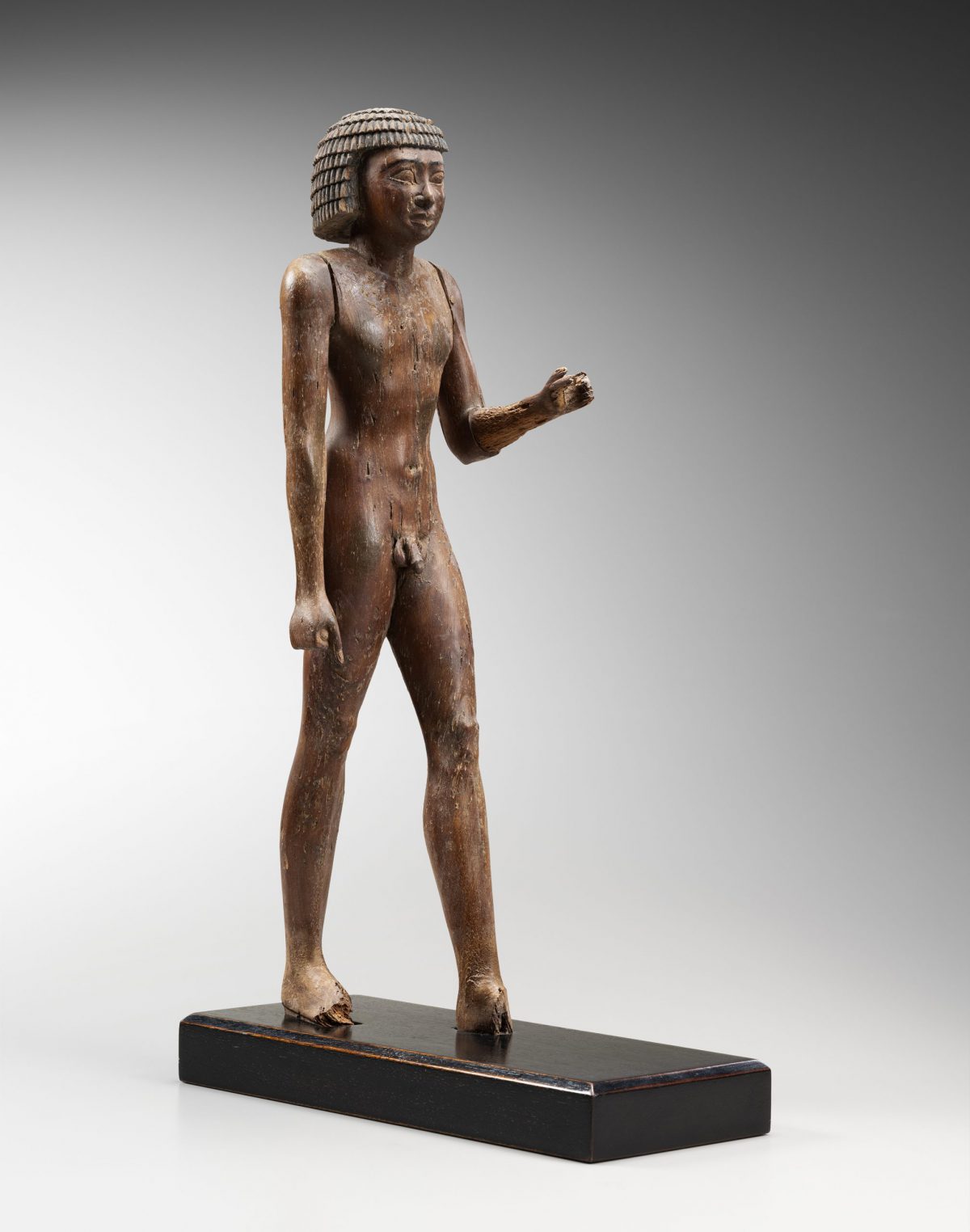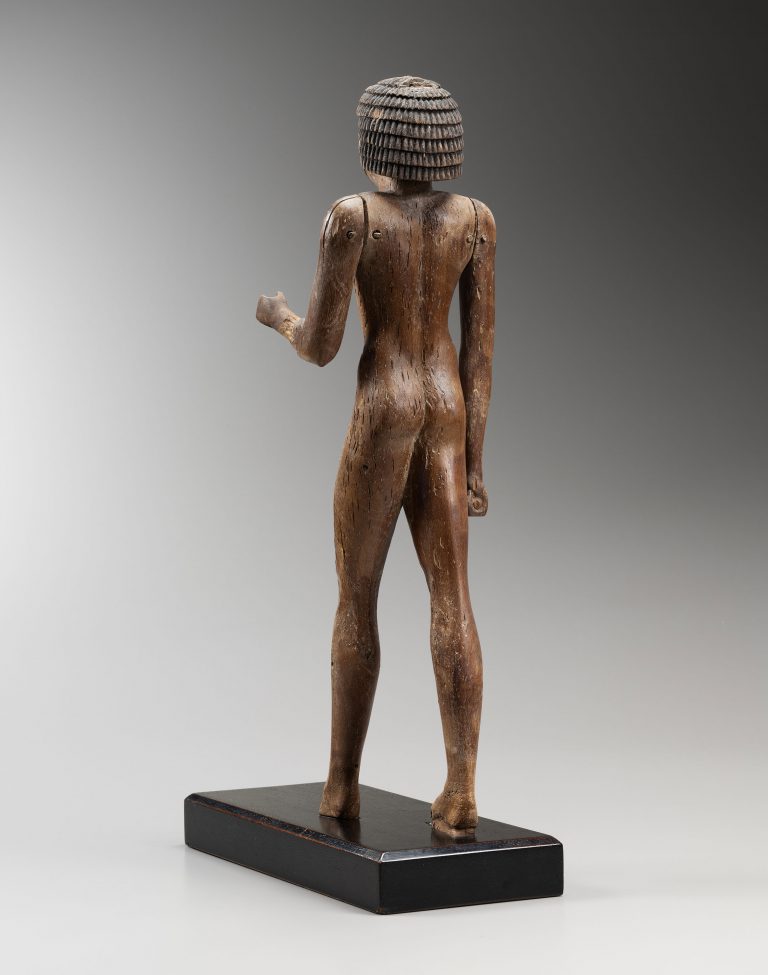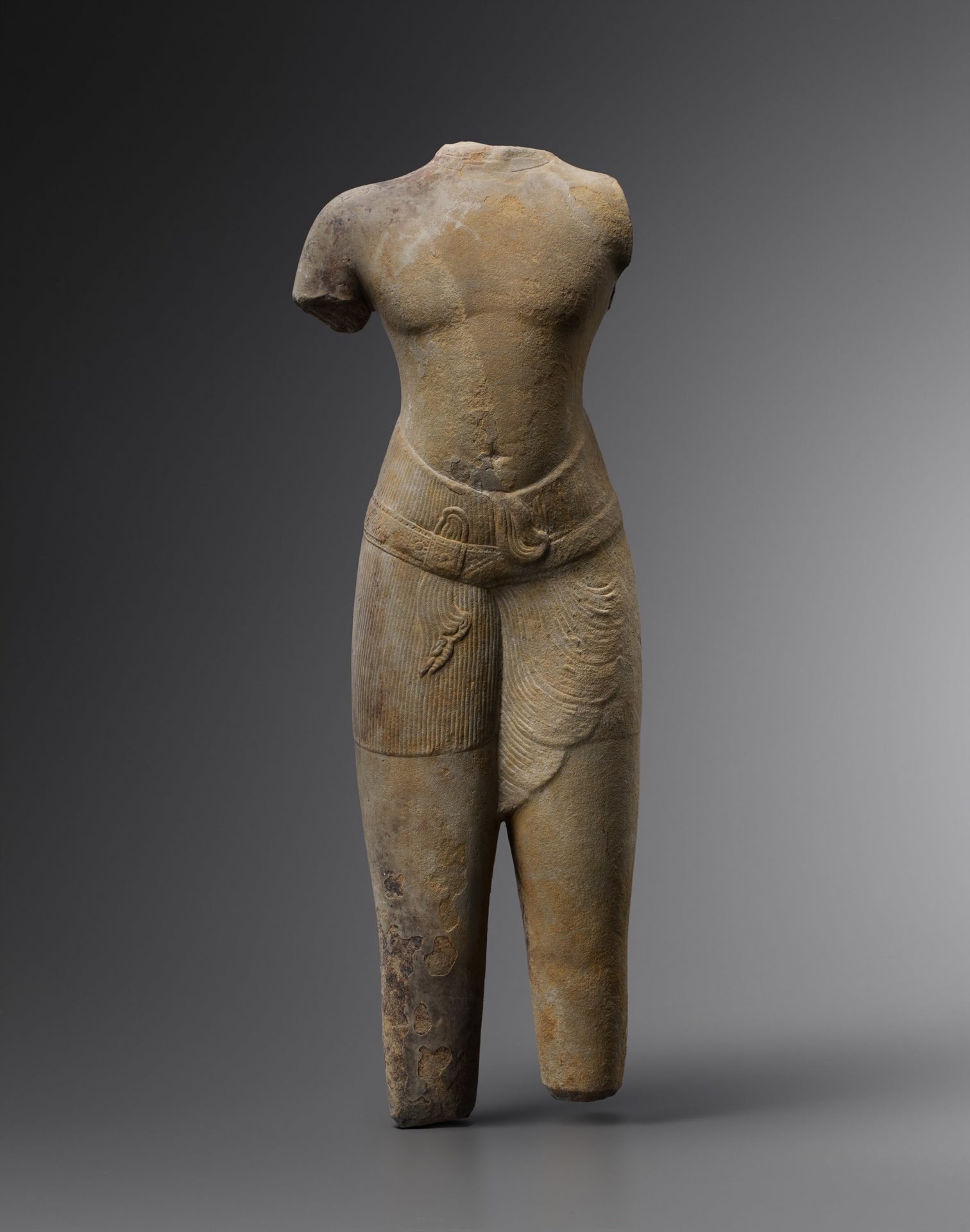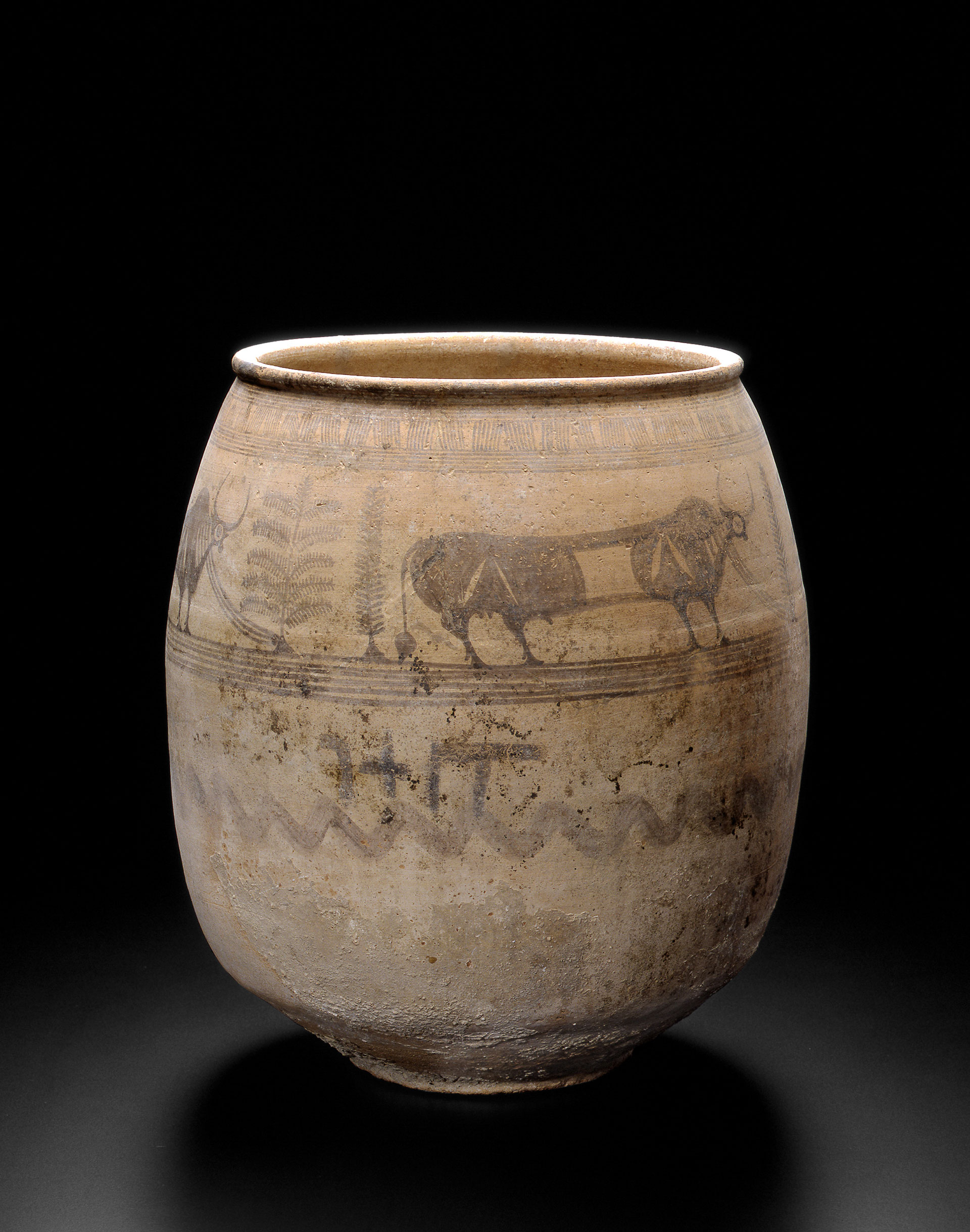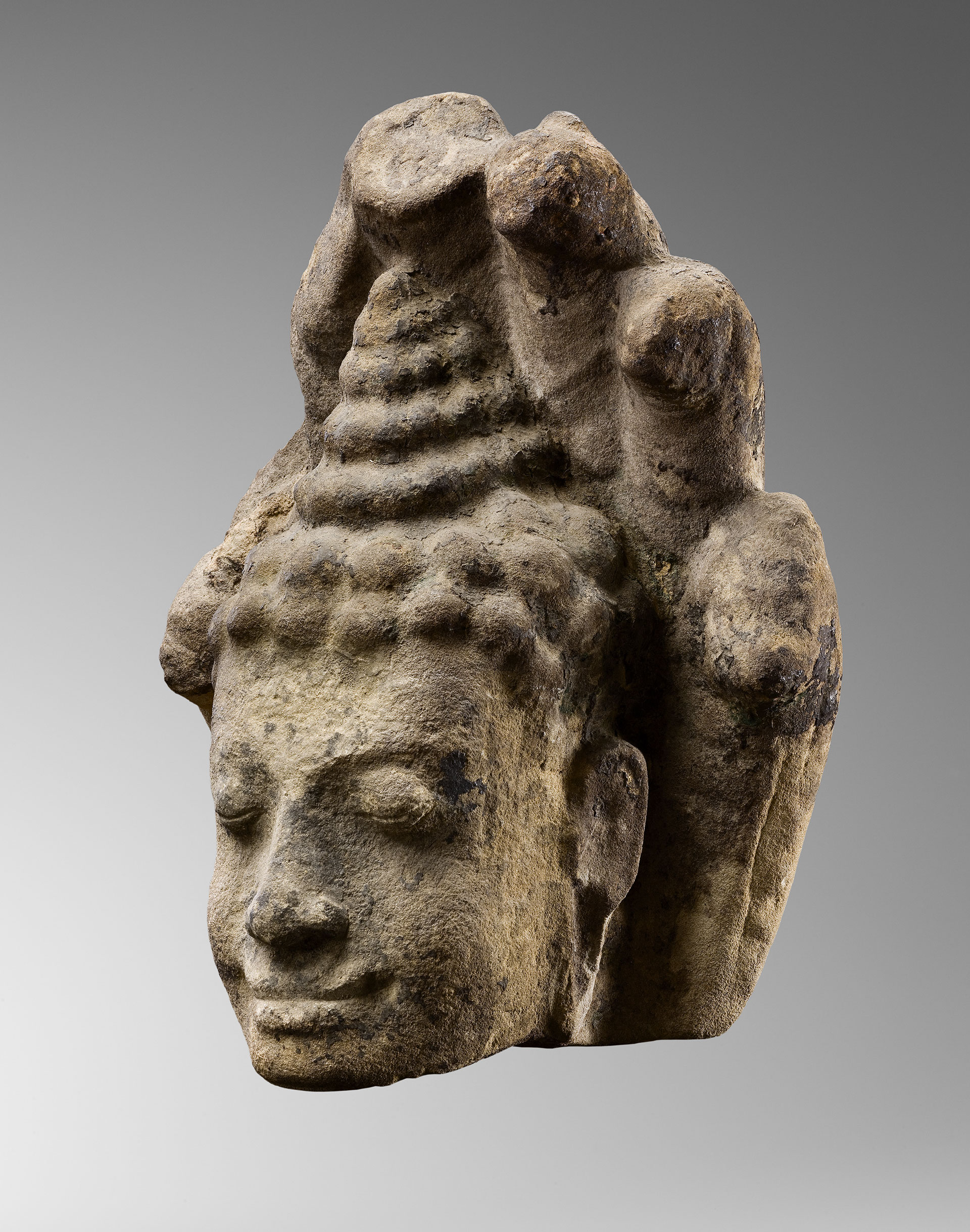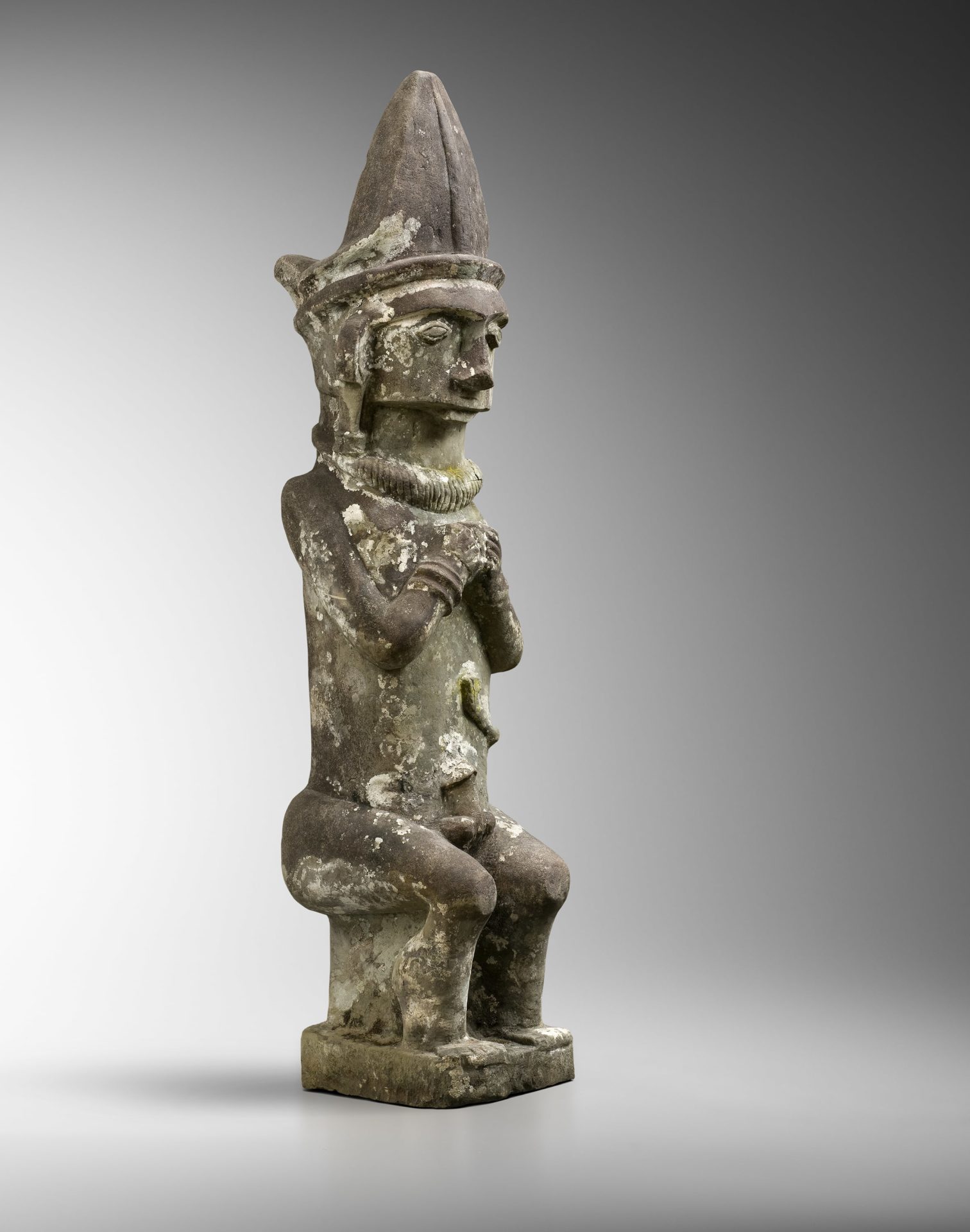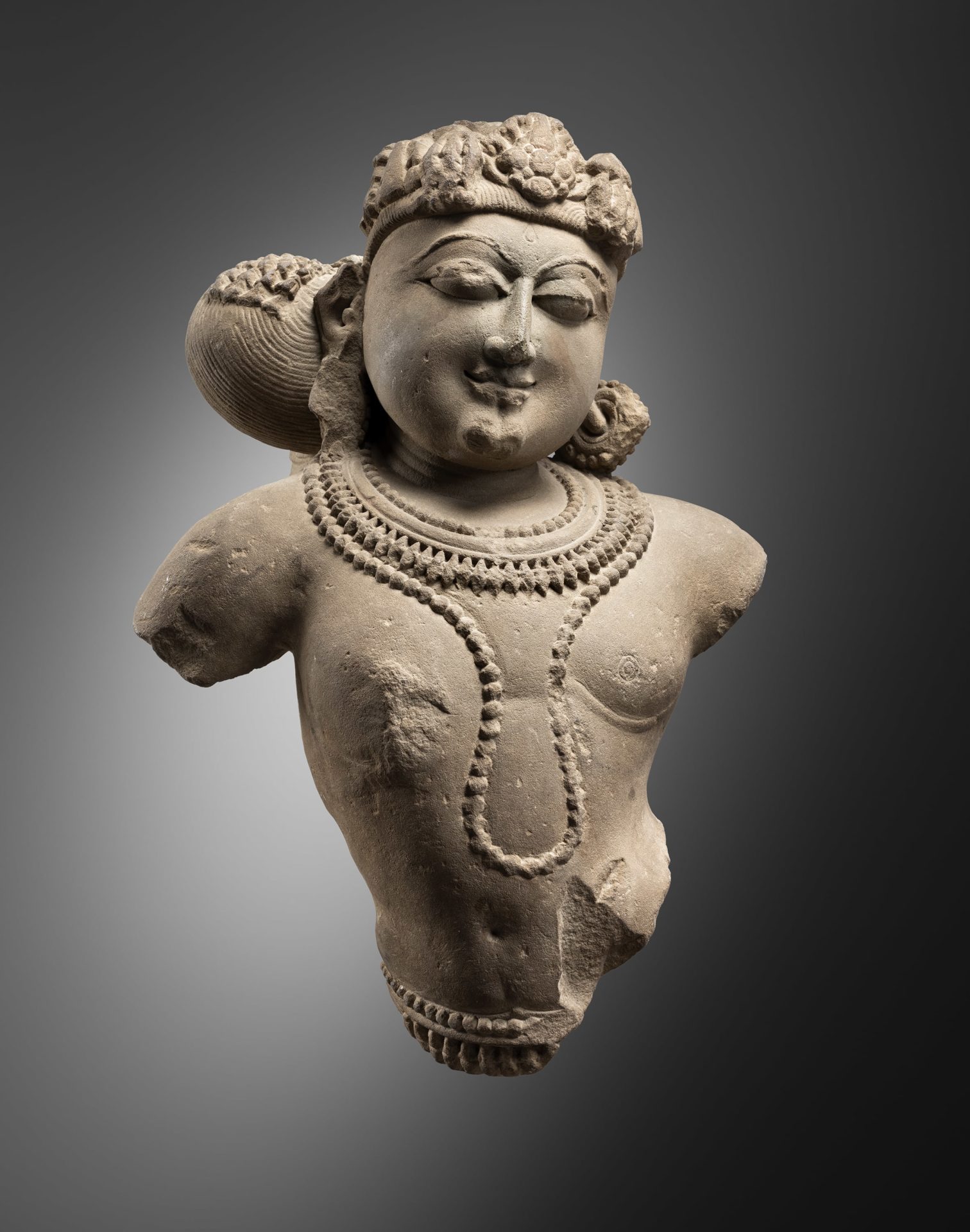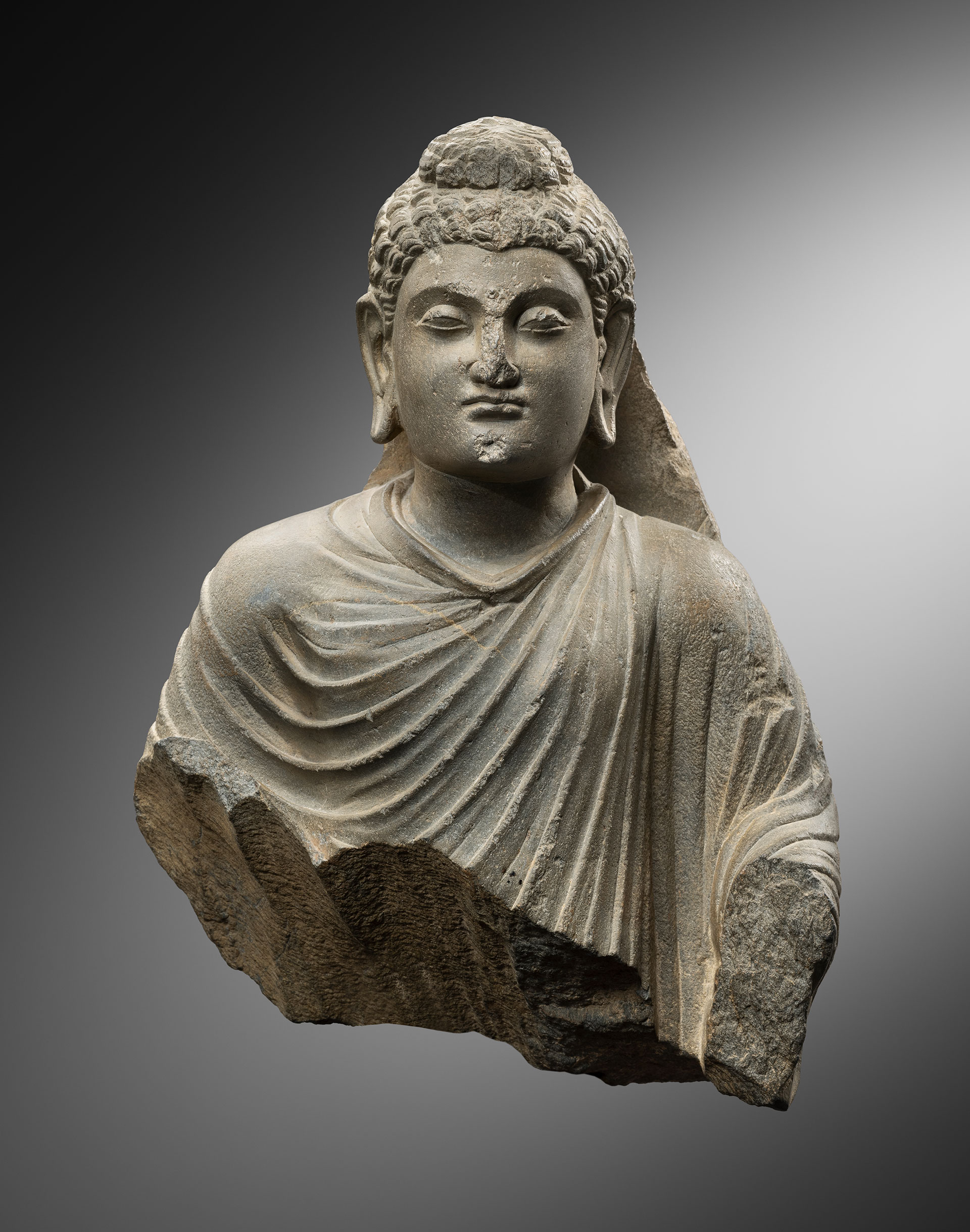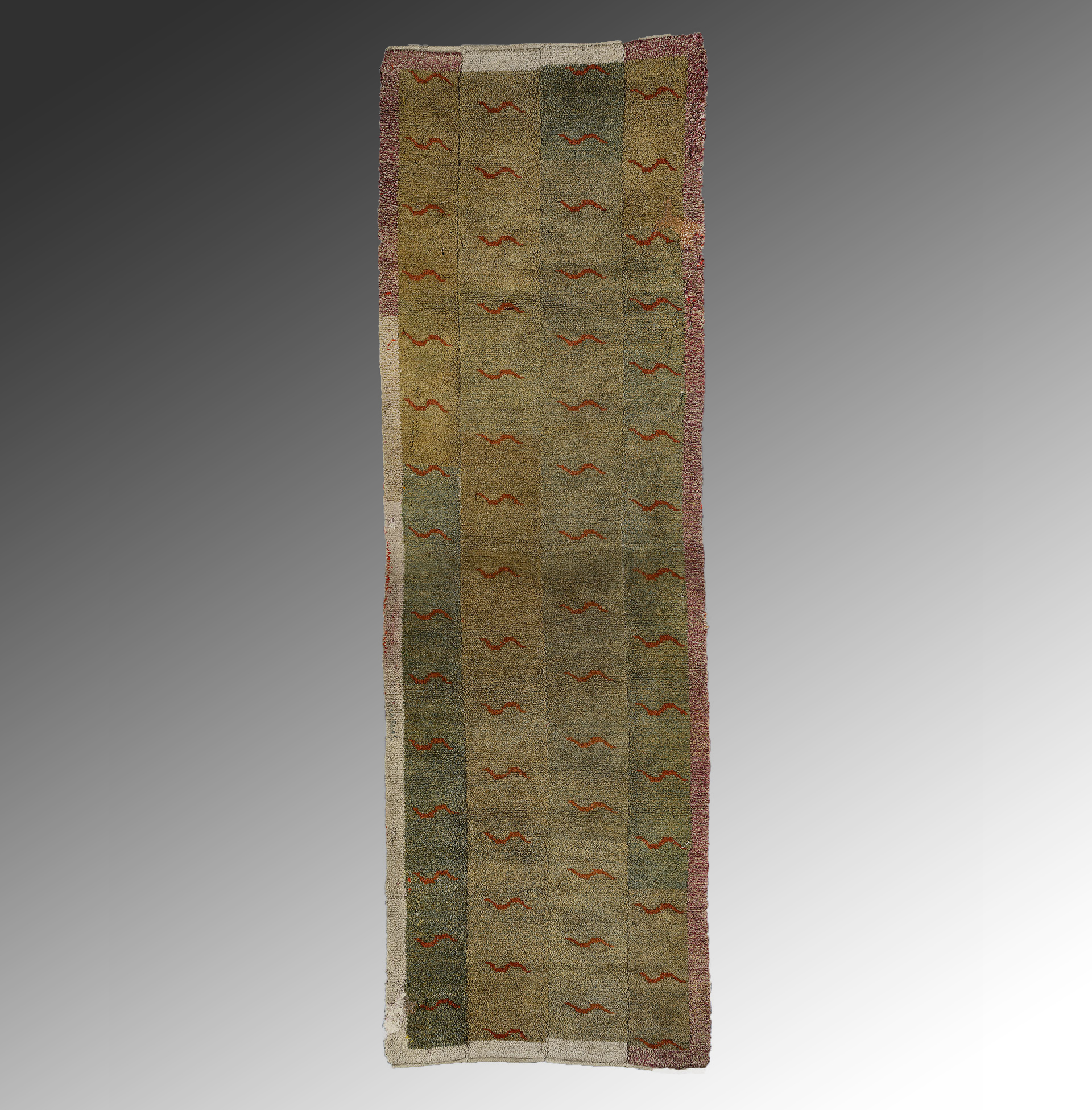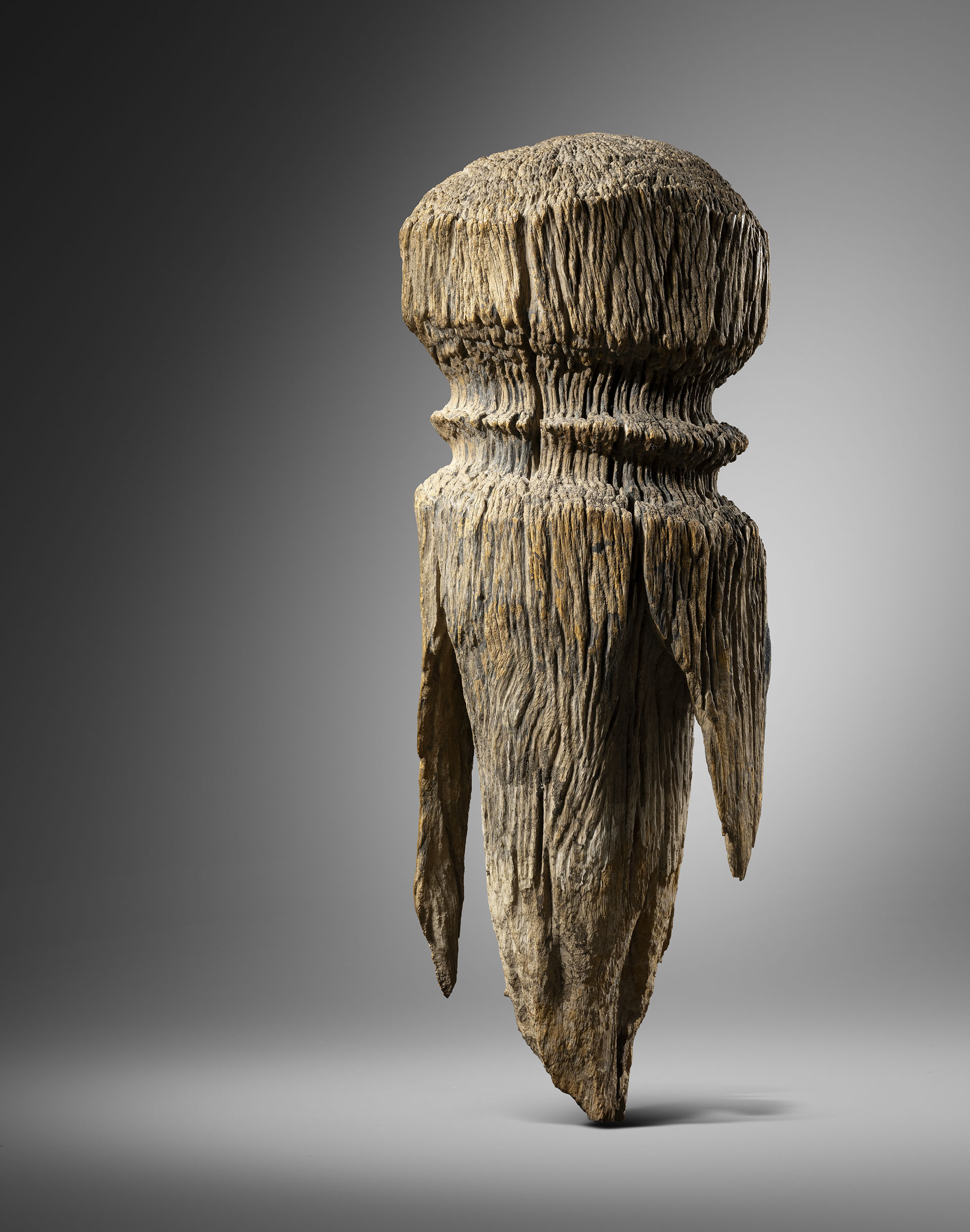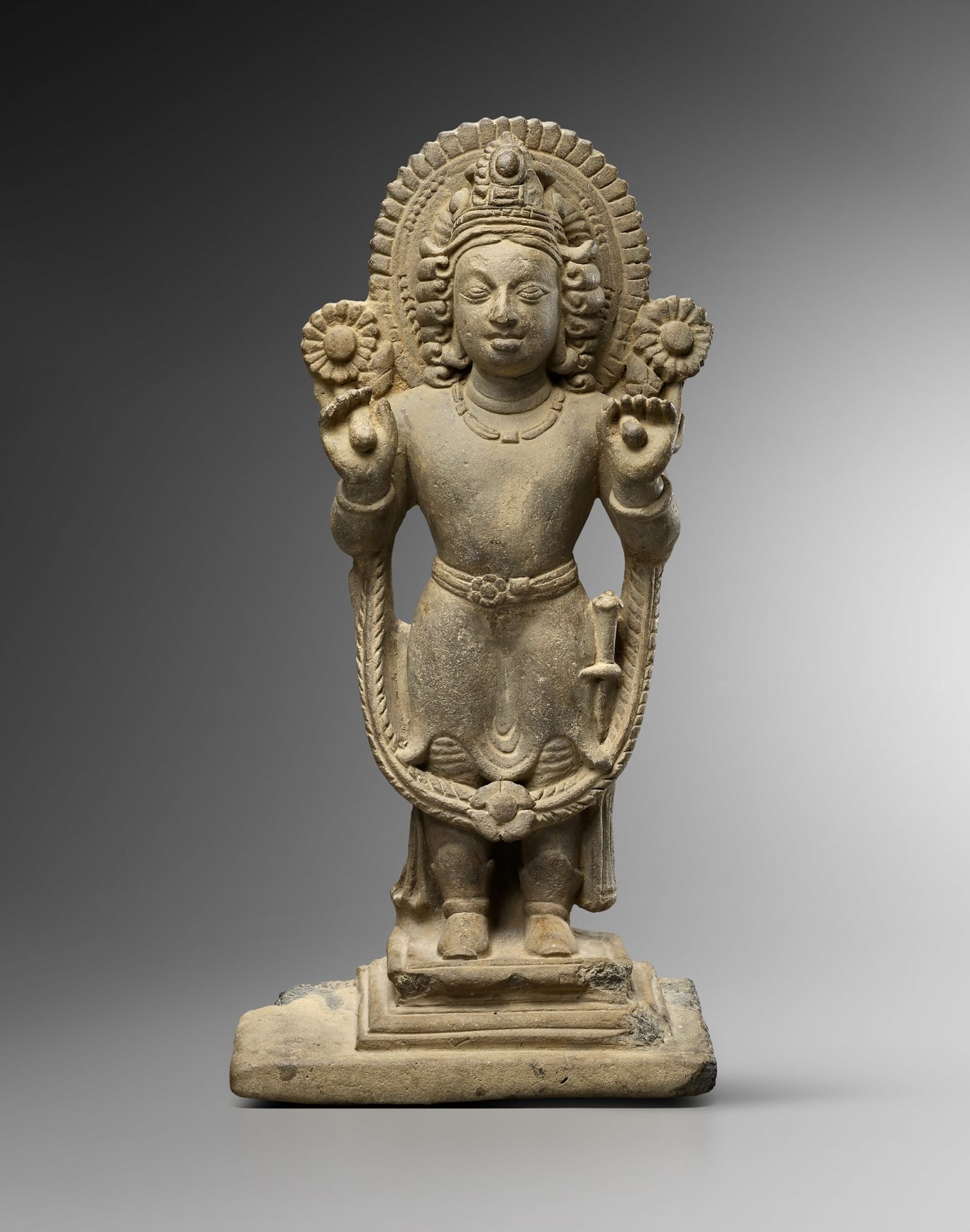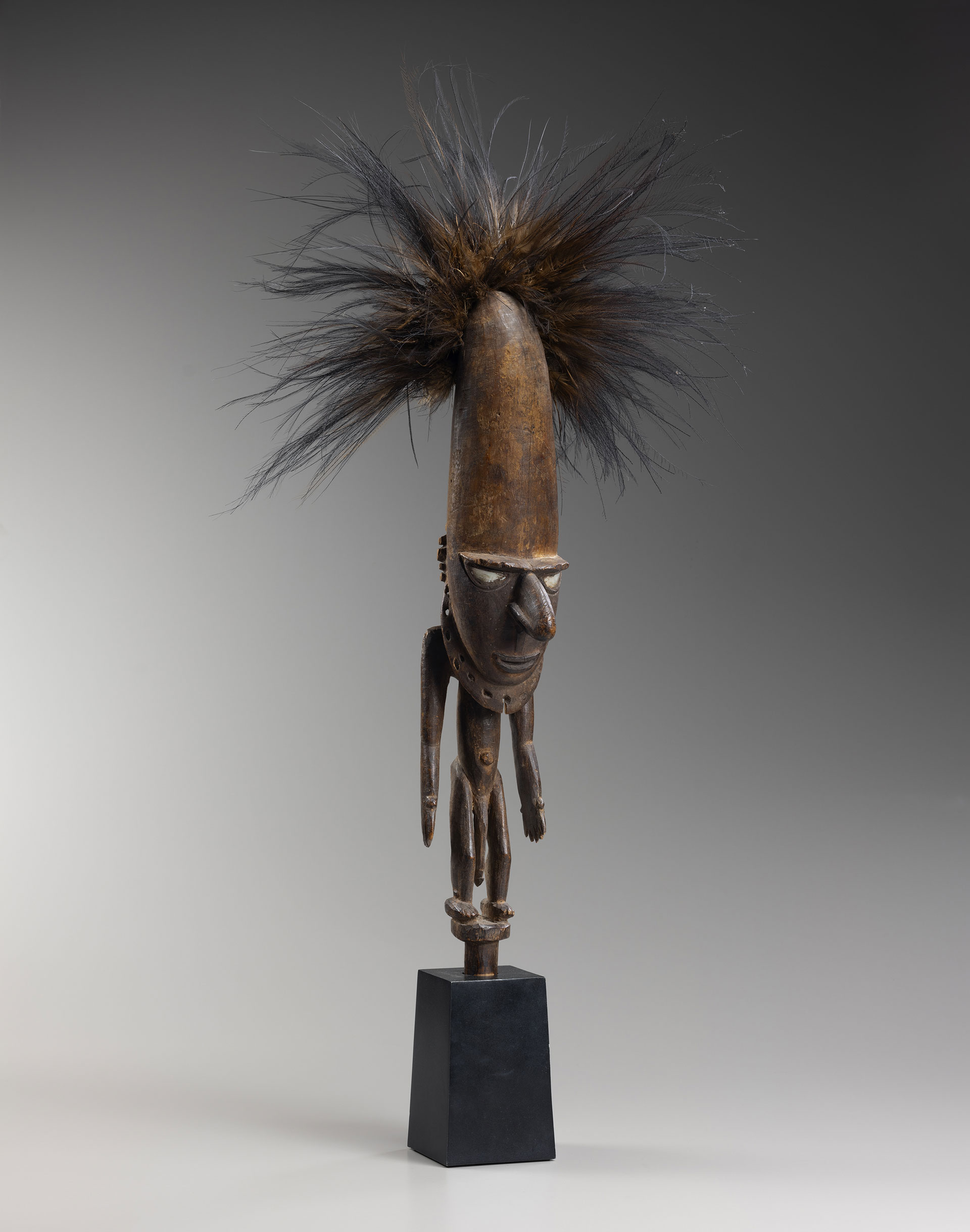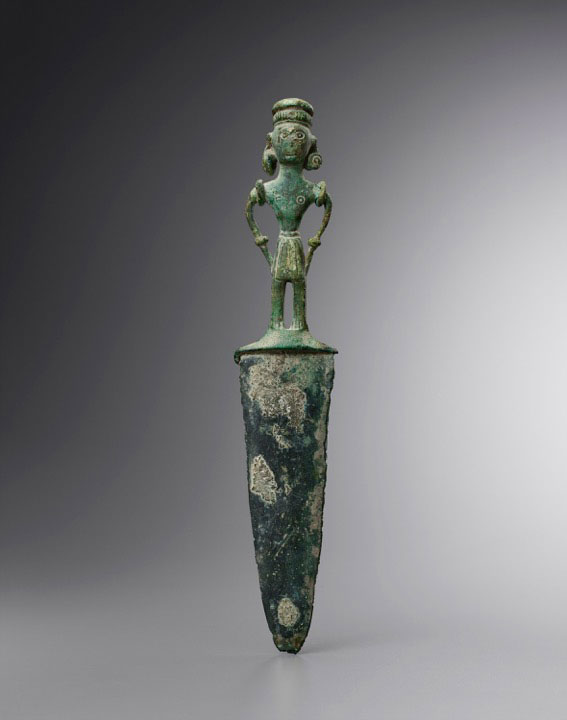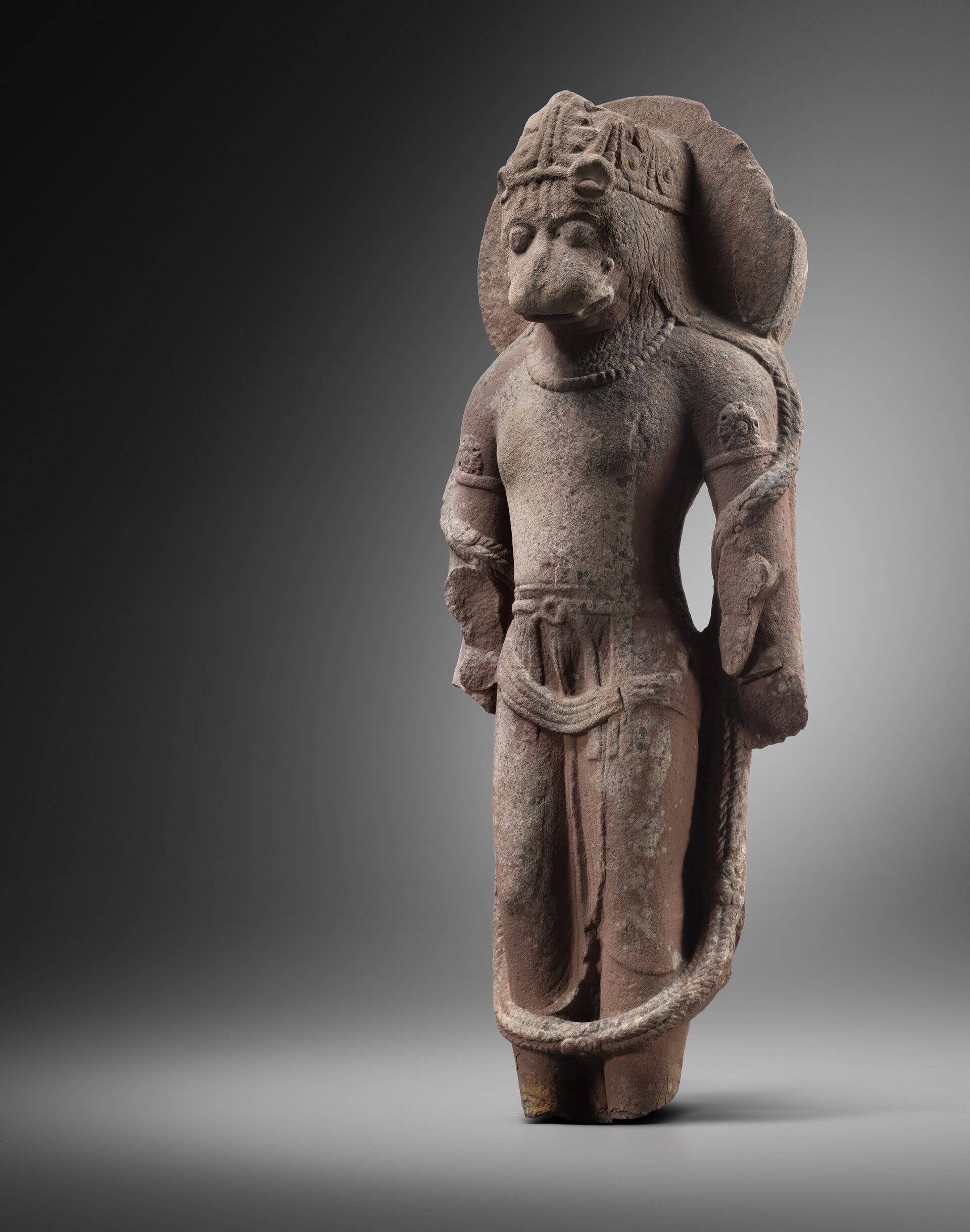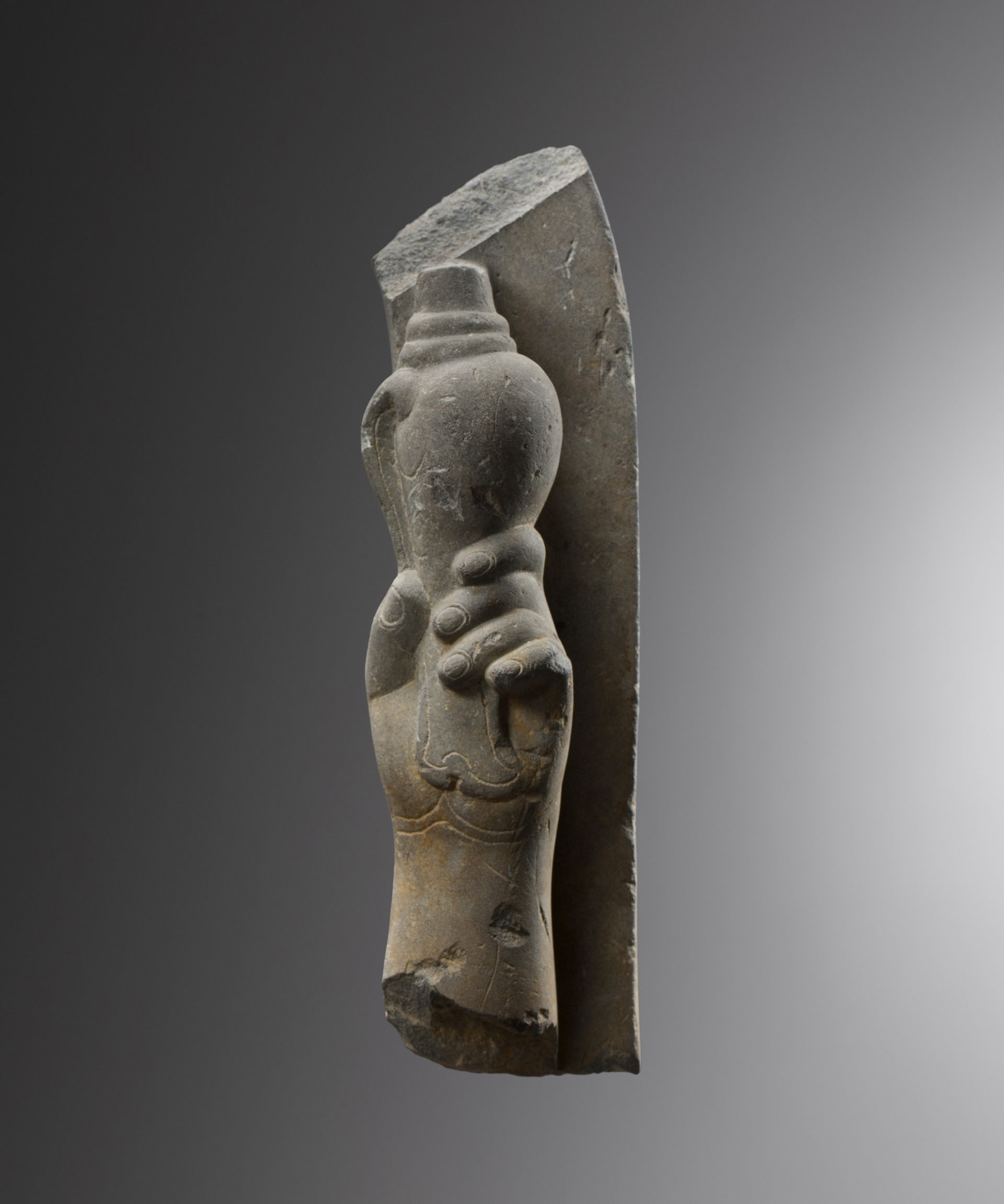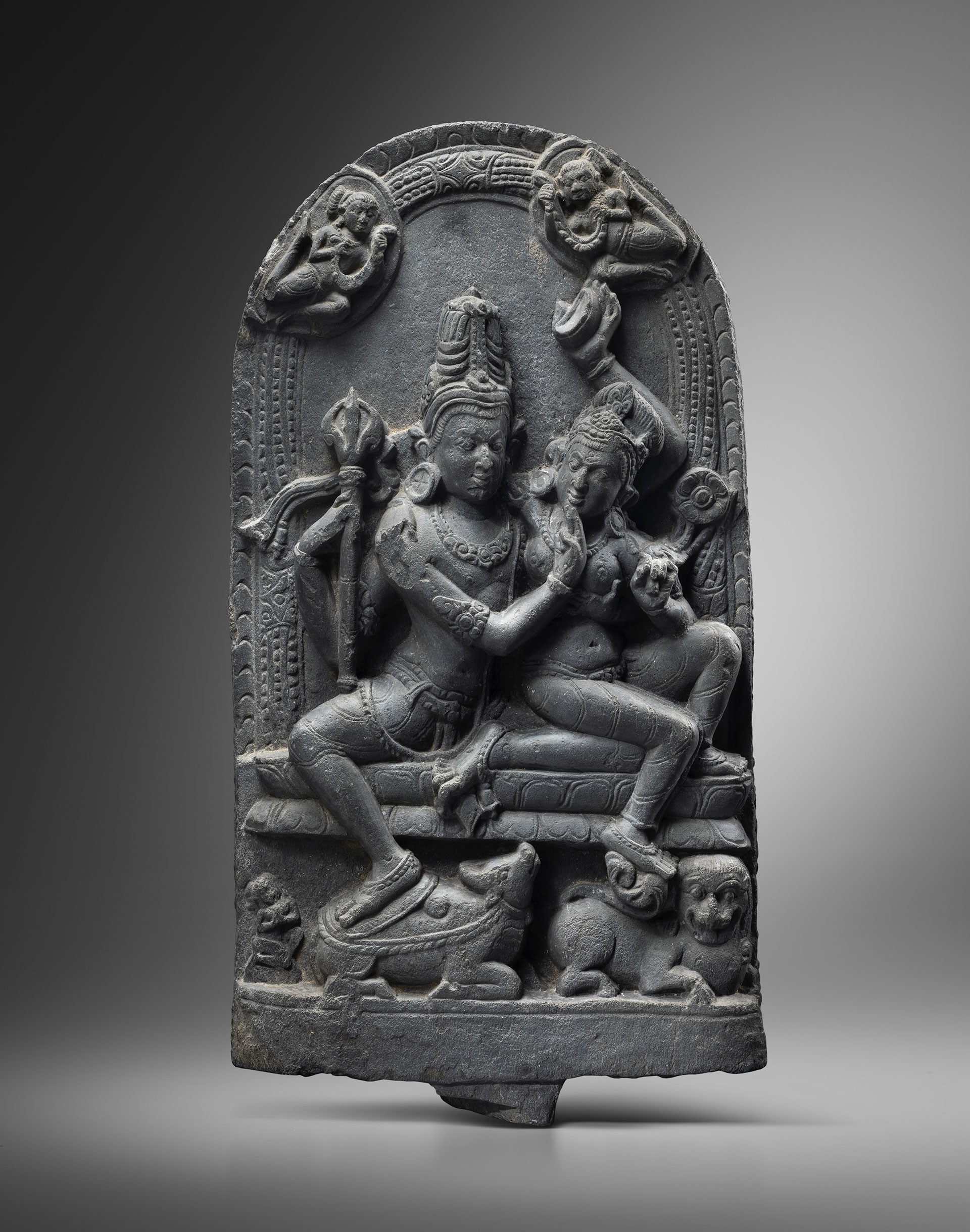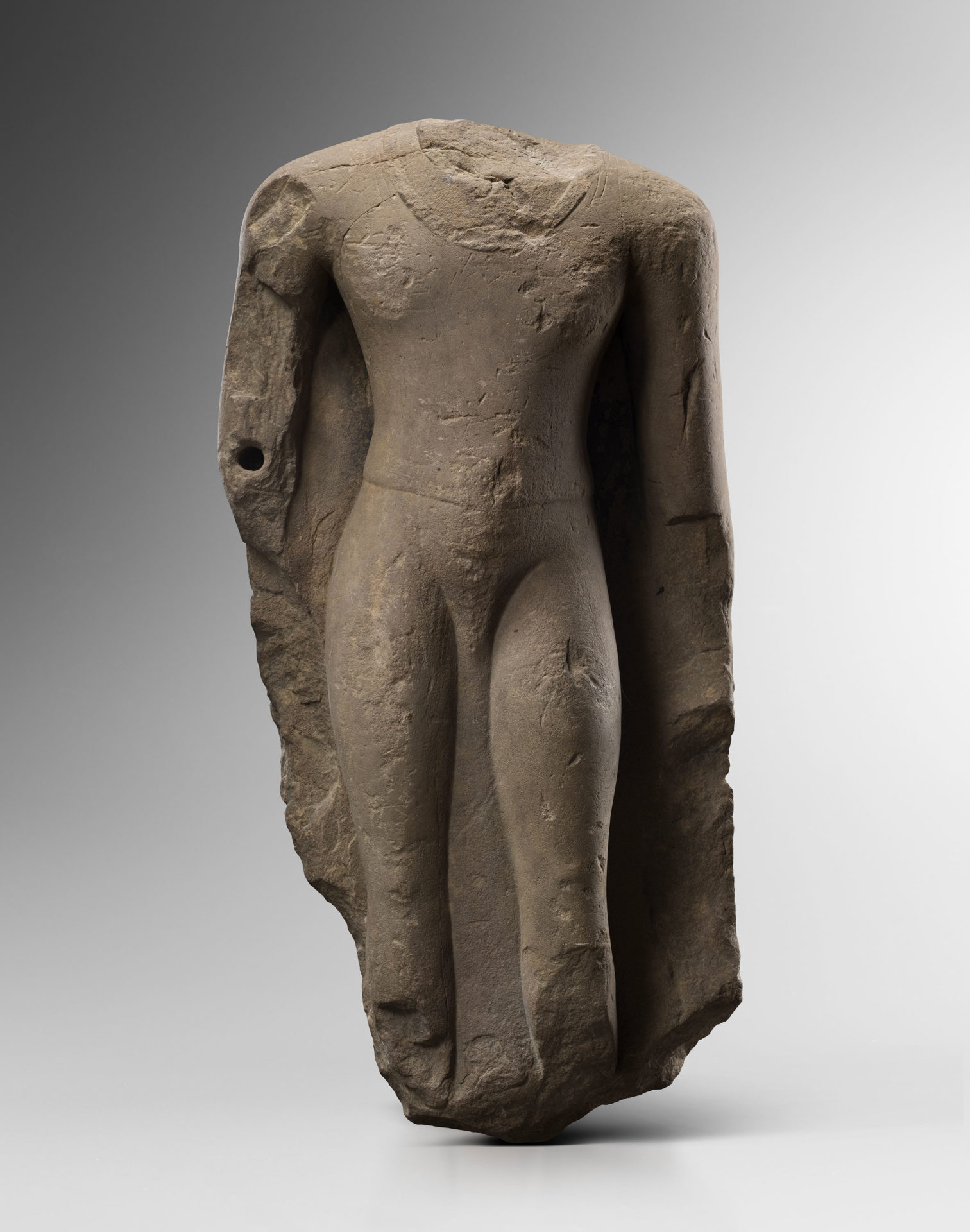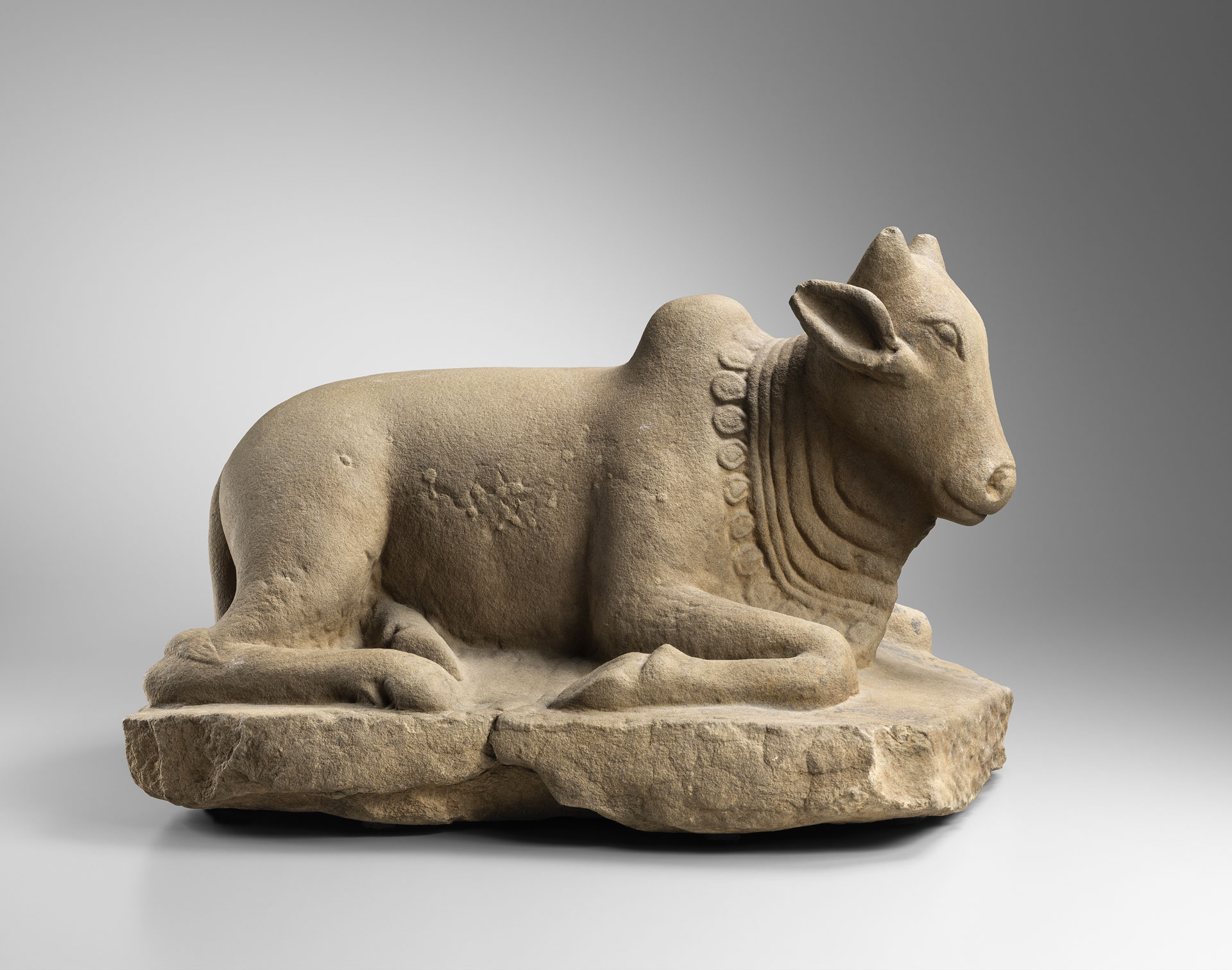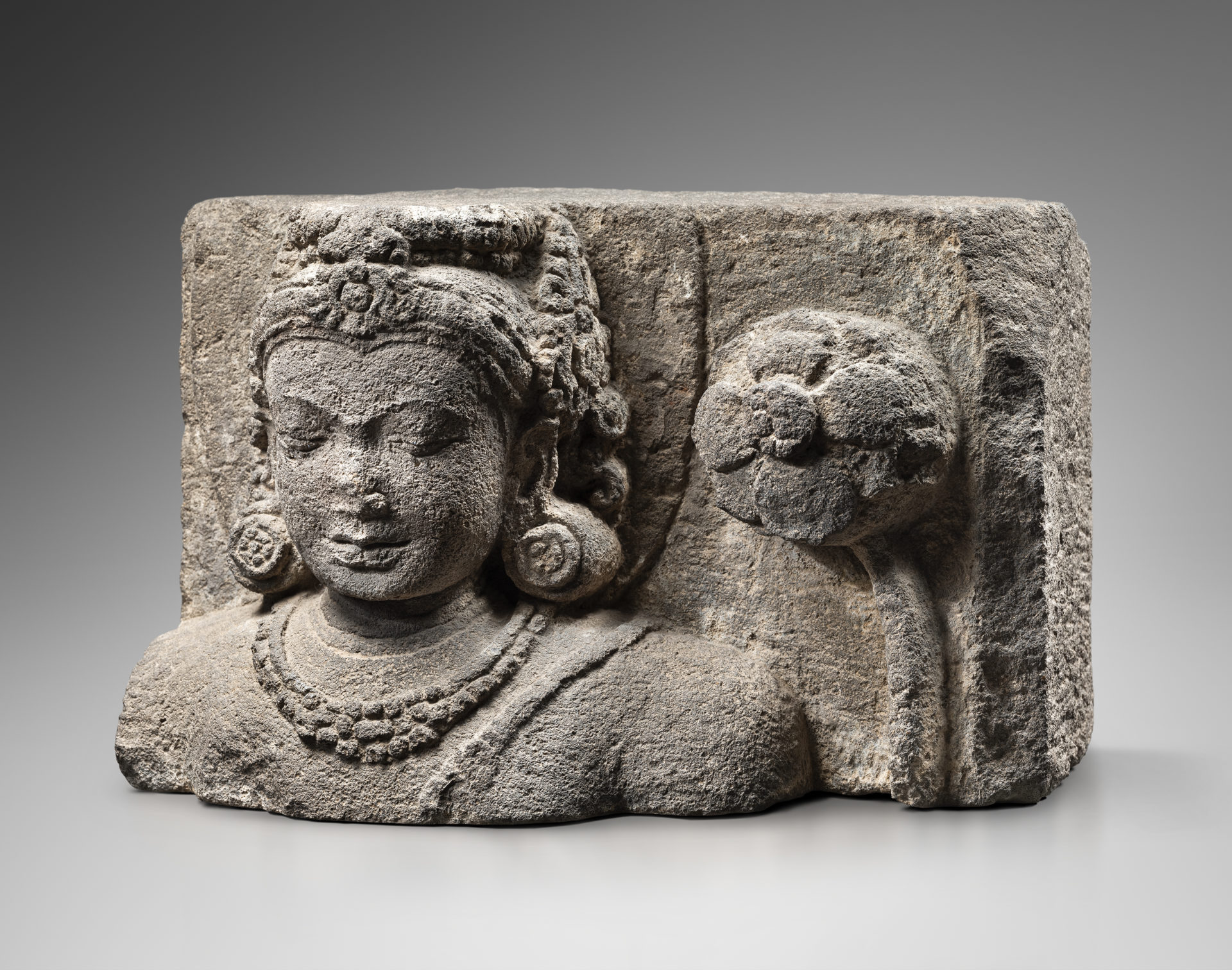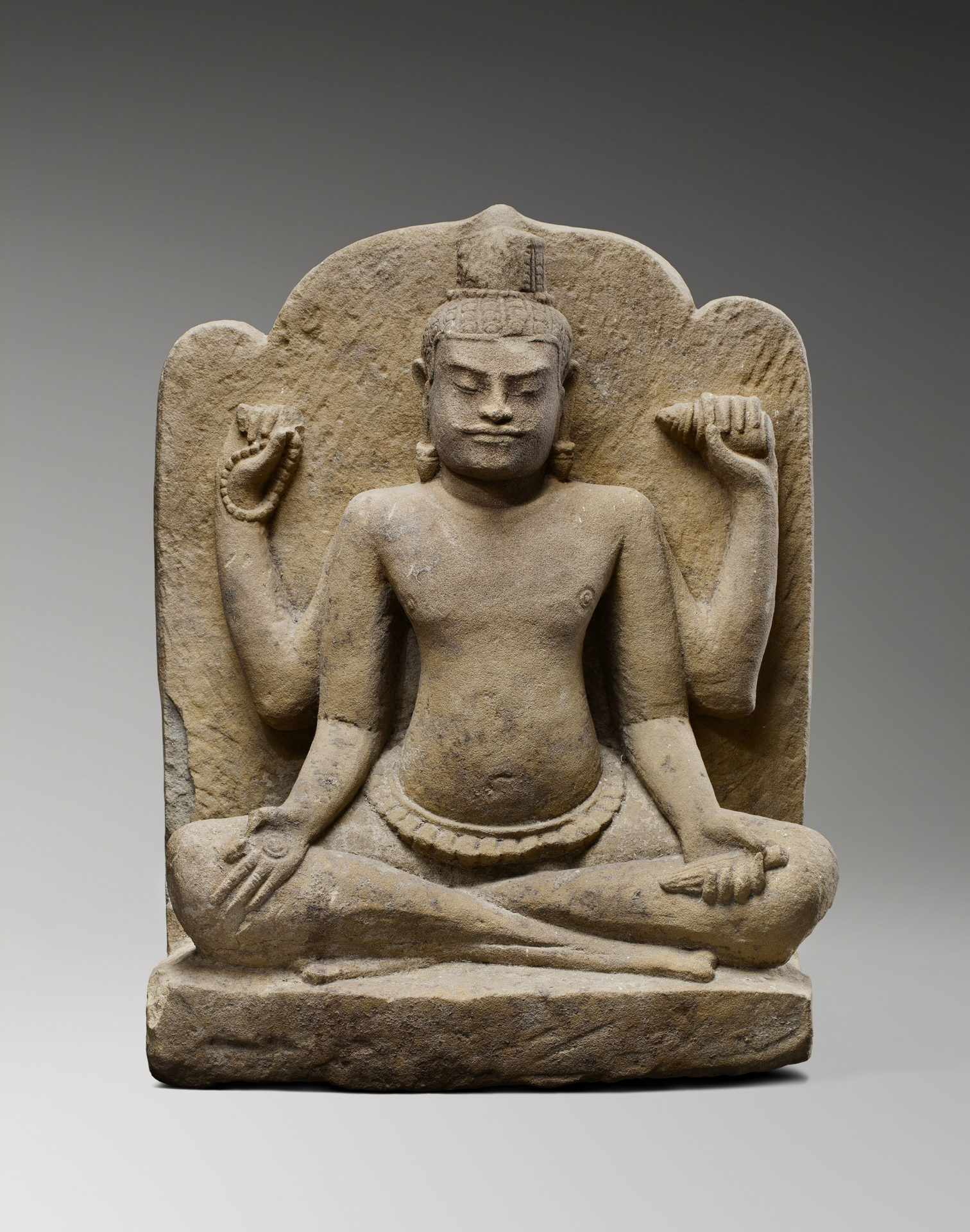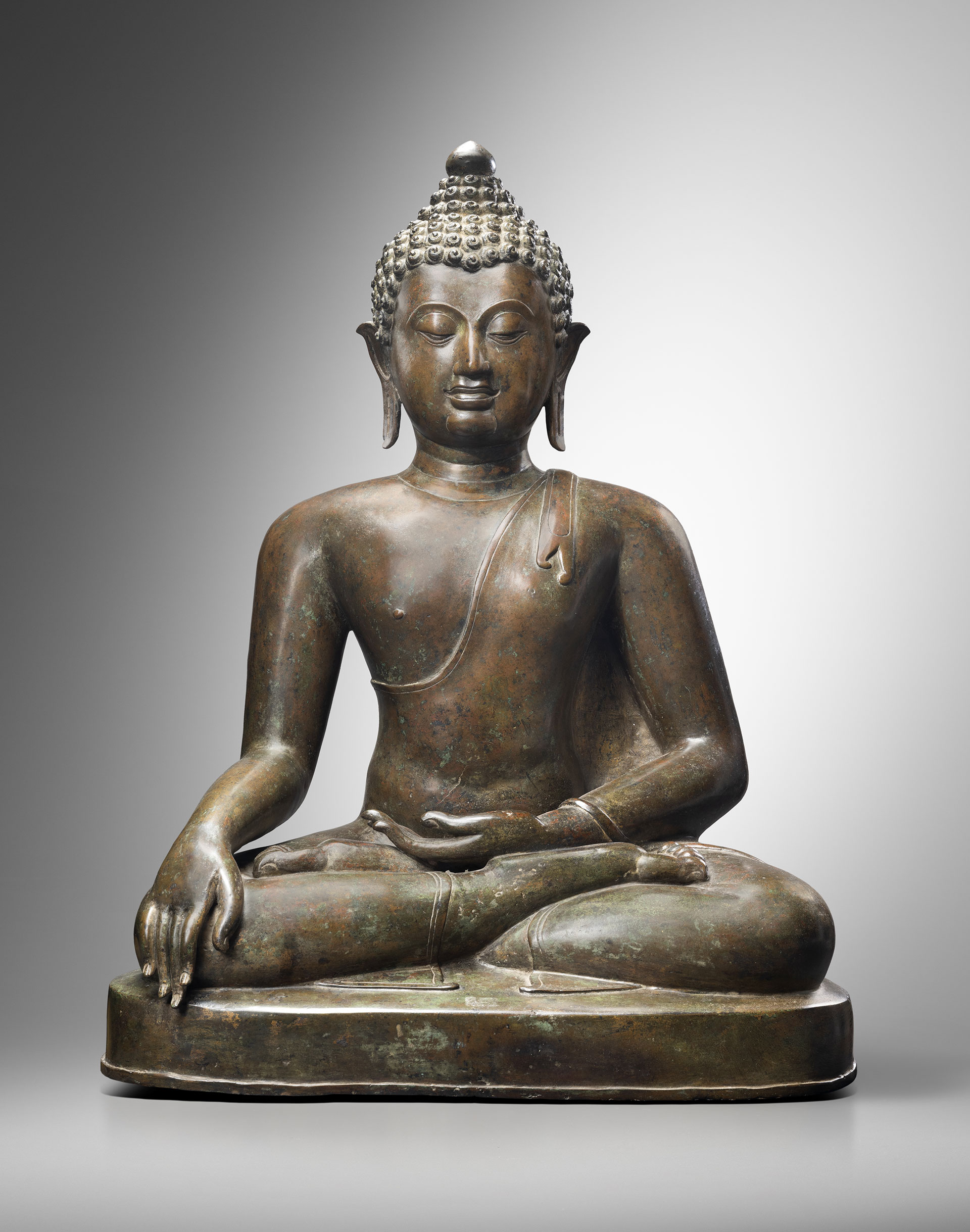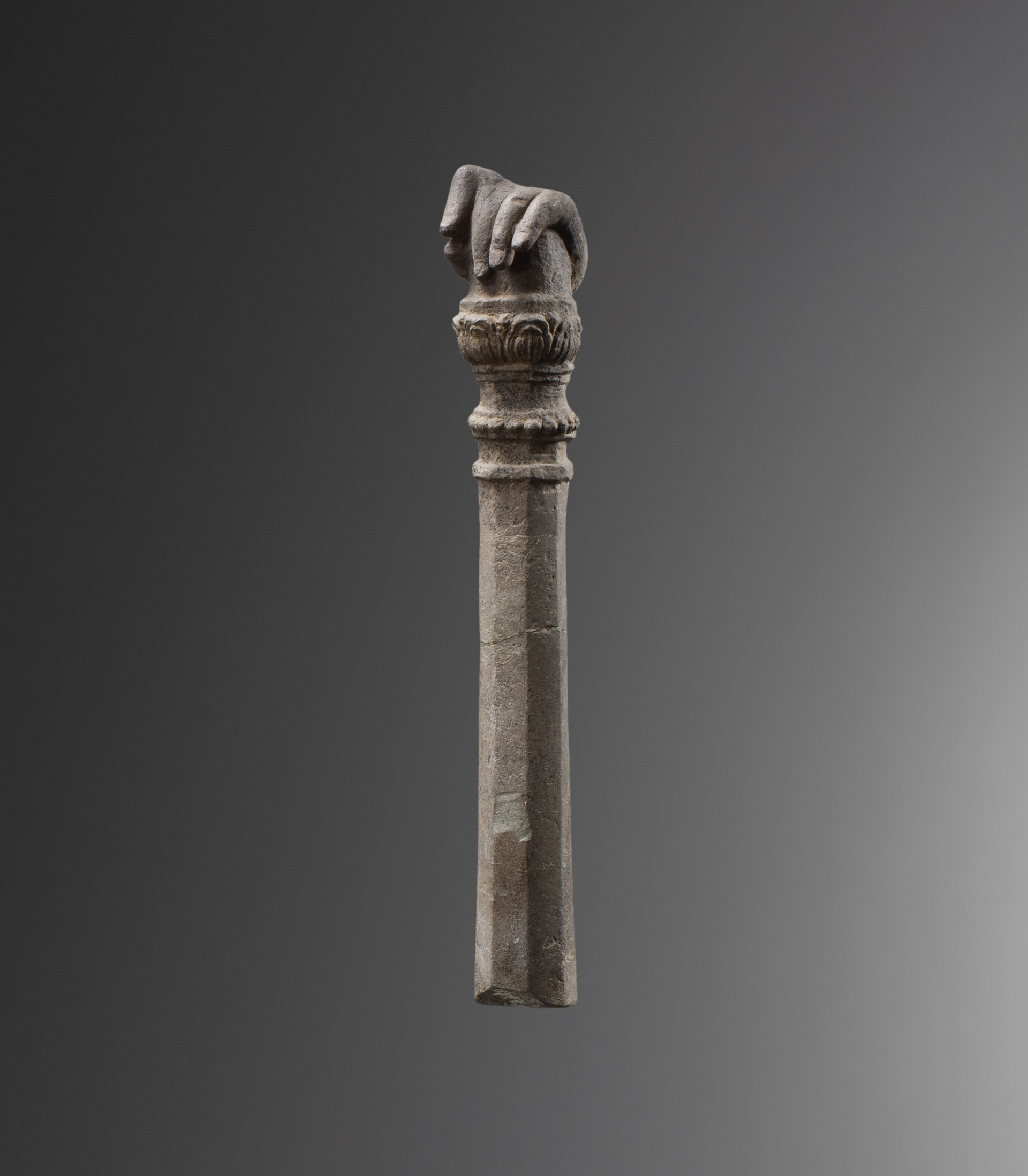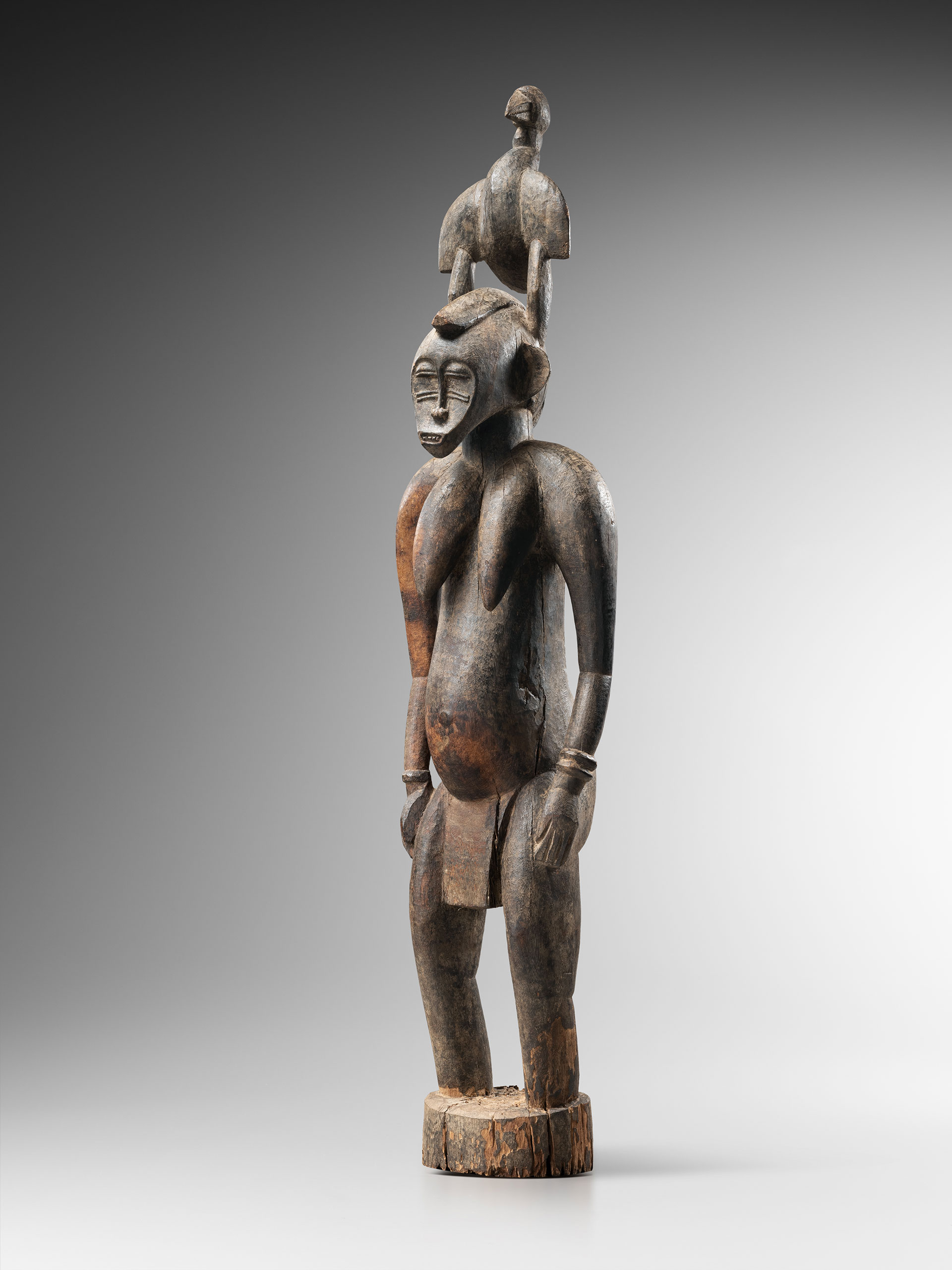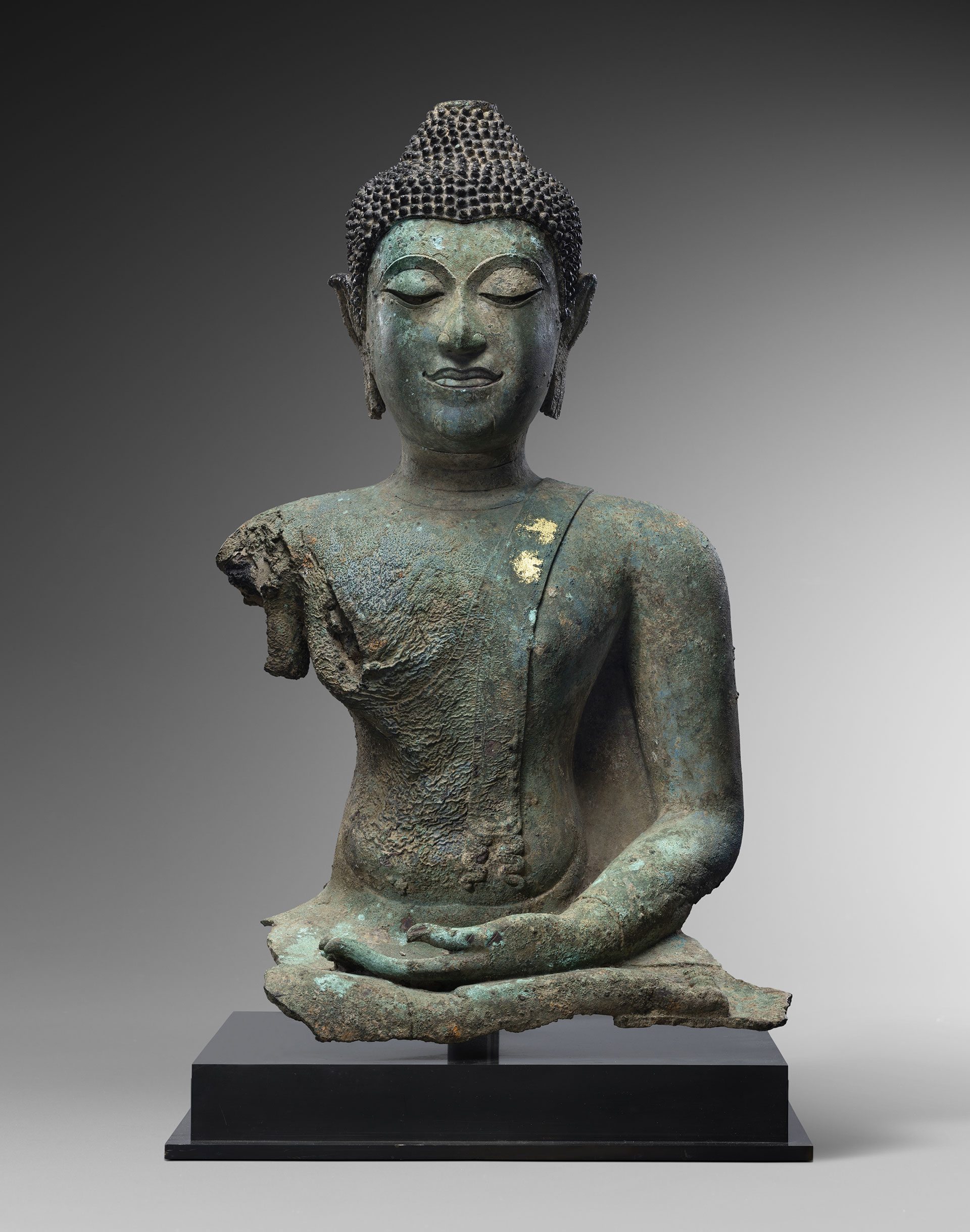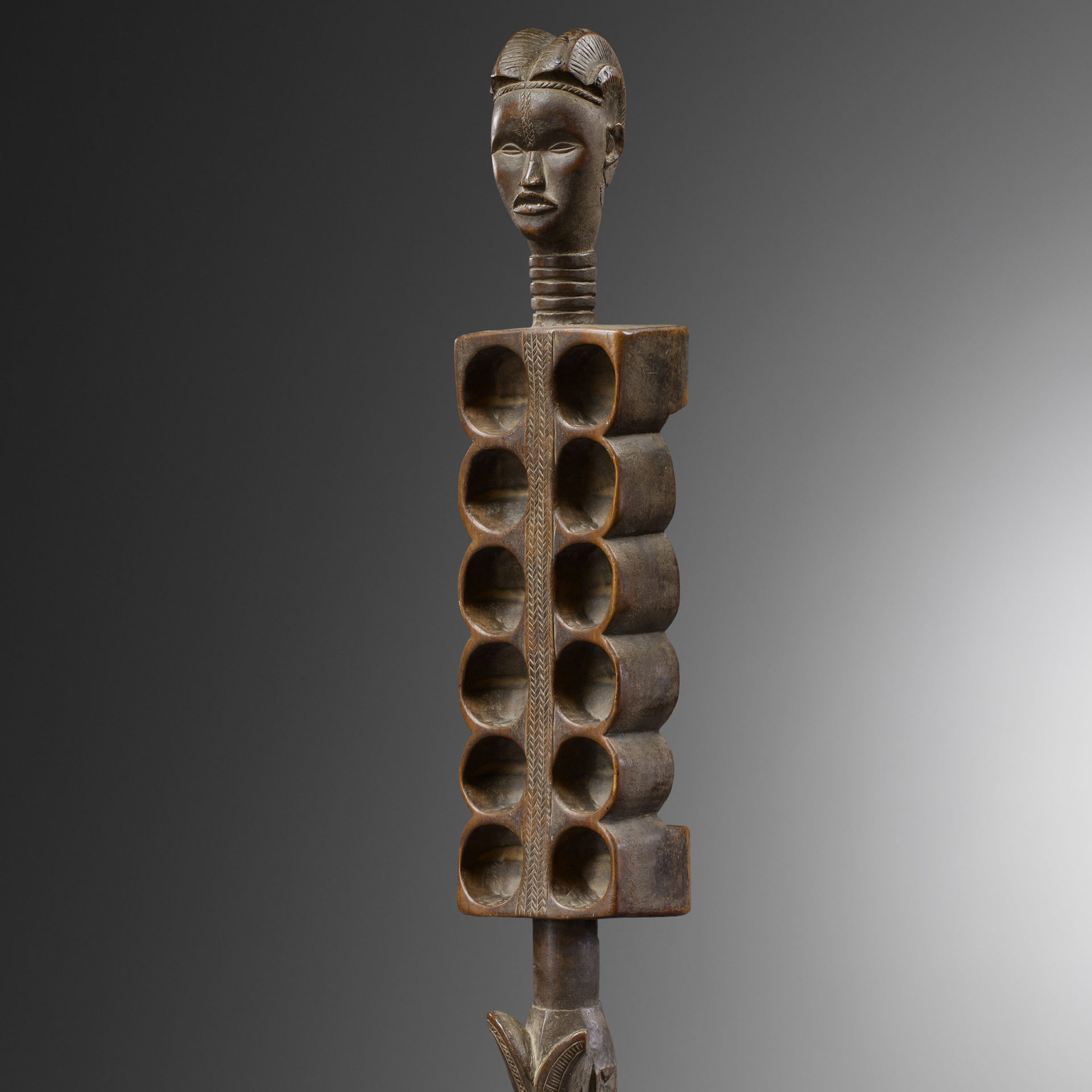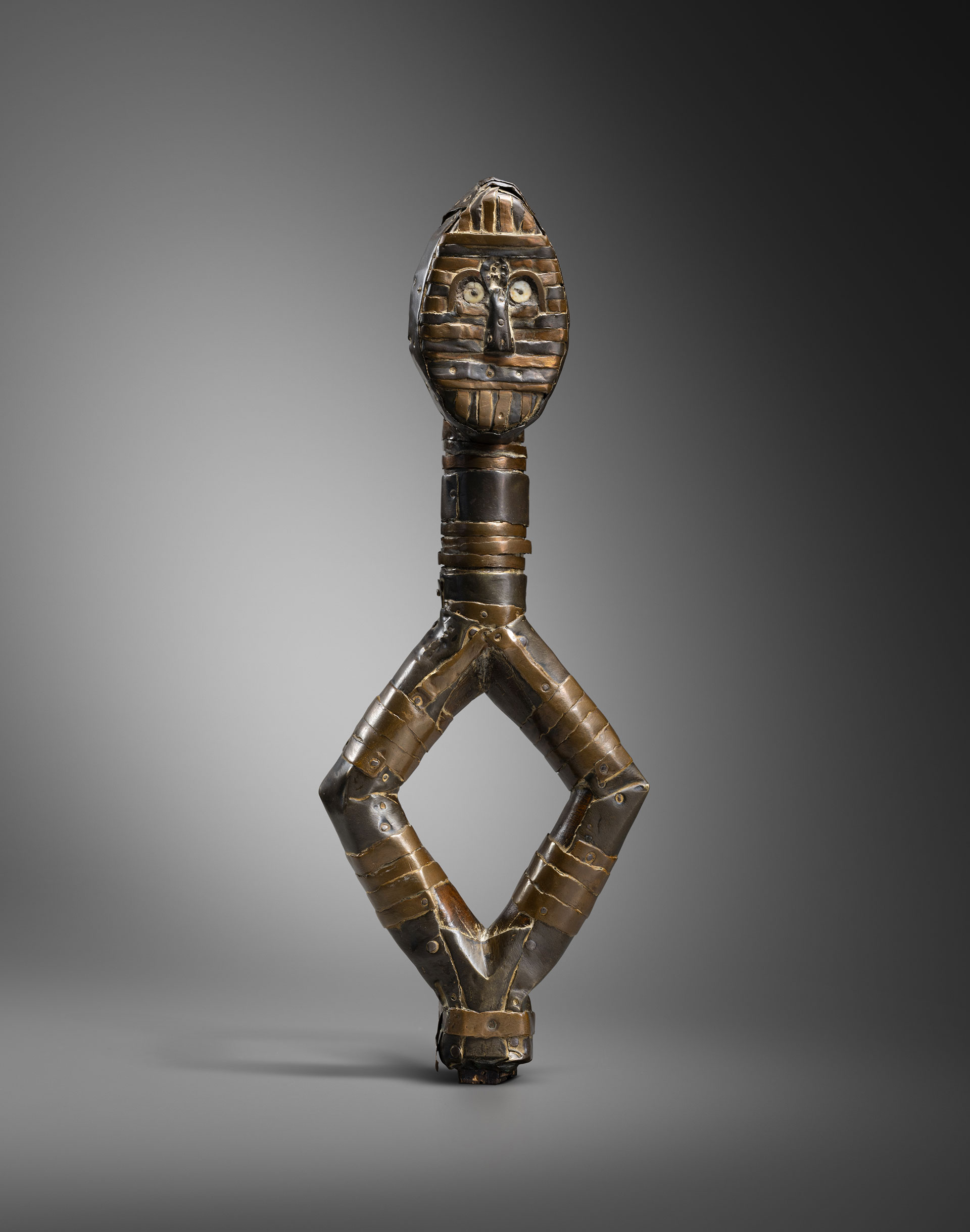The man is represented in his prime. The short curled wig hides the ears but reveals the neck; it fits the head snugly like a helmet. The top of the head is striped with radiating furrows, which circumscribe in the seven lower sections, the weave of the hair. There are numerous dated examples, thanks to their archaeological context, from the 6th Dynasty, which share these characteristics and allow us to attribute this statue with certainty to the « Second style » from the end of the Old Kingdom (Note 1). The body is carved from a single piece of wood, with the exception of the arms, which are additional inserts, and the section in front of the feet, which is now missing with the base. The black colour had been added to the wig and to highlight the make-up line of the eyebrows and eye contour…
Nudity in Egyptian art is generally the preserve of representations of children or peasants. However, it is found in roughly 10% of statues preserved from the Old Kingdom (Note 2). Here it is certainly nota symbol of youth, as the man clearly appears to be an adult, as shown in the muscle definition as well as his circumcised penis – children are represented with their foreskin intact, which leads us to believe that circumcision would be performed in puberty. This practice seems to be generally recorded in the Old Kingdom. lt can be seen represented on a relief in the mastaba of Ankhmahor in Saqqara (« Teti Cemetery »). Neither should this nudity be considered a sign of low status, as would be the case for a peasant; the statue with its large dimensions and quality craftsmanship is certainly valuable, and in all probability depicts the owner of the tomb in the serdab in which it would have been installed. lt is not out of the question that the nude state would have been concealed by a real material loincloth, around the hips of the figure, but there is nothing to confirm this theory. Most likely, the starkness of the body is a reflection of the person in his most simple, tranquil and perfect form, only the noble cane which he brandished in front of him indicating his status, for eternity.
by Dr. Christian E. Loeben (Kurator der Ägyptischen Sammlung, Museum August Kestner (Hannover)
Notes
1 cf. Harvey J. « Old Kingdom Wooden Statues: Stylistic Dating Criteria » in Ziegler Chr., (ed .), L’art de /’Ancien Empire égyptien. Actes du Colloque organisé au Musée du Louvre, Paris, 1999, p. 355· 379; Harvey J., Wooden Statues of the Old Kingdom: A Typological Study, Leyde-Boston-Cologne, 2001.
2 Harvey J., op. cit., p. 27.
LARGE EGYPTIAN FIGURE OF A MAN
Temporarily Withdrawn/Reserved
- Egypt
- Old Kingdom, 6th Dynasty, ca. 2350-2150 B.C.
- Wood
- H. 58.5 cm
- Provenance :
• Call. S., Brussels, Belgium
- Literature :
• BILLEN Jacques, Harmakhis 25 Years, Galerie Harmakhis, 2013, pp. 12-15
As its only attributes, the statue wears a short curly wig and a cane in his left hand, which has now disappeared. The figure is slender, with a narrow waist, flat stomach, lean muscle definition, pert and firm buttocks. The proportions seem to lengthen as you move down the body, with tapered calves that seem to go on forever. The face itself shows a less naturalistic style of work. The disproportionately large eyes focus the viewer’s attention. The thick lips are fixed, outlined with defined lines and square corners. The chin is slightly weak, the nose is thick, the nostrils are outlined with a deep incision, and the cheeks are smooth. The face is young but not juvenile. The man is represented in his prime. The short curled wig hides the ears but reveals the neck; it fits the head snugly like a helmet. The top of the head is striped with radiating furrows, which circumscribe in the seven lower sections, the weave of the hair. There are numerous dated examples, thanks to their archaeological context, from the 6th dynasty, which share these characteristics and allow us to attribute this statue with certainty to the « Second style » from the end of the Old Kingdom (Note 1). The body is carved from a single piece of wood, with the exception of the arms, which are additional inserts, and the section in front of the feet, which is now missing with the base. The black colour had been added to the wig and to highlight the make-up line of the eyebrows and eye contour.
Nudity in Egyptian art is generally the preserve of representations of children or peasants. However, it is found in roughly 10% of statues preserved from the Old Kingdom (Note 2). Here it is certainly nota symbol of youth, as the man clearly appears to be an adult, as shown in the muscle definition as well as his circumcised penis – children are represented with their foreskin intact, which leads us to believe that circumcision would be performed in puberty. This practice seems to be generally recorded in the Old Kingdom. lt can be seen represented on a relief in the mastaba of Ankhmahor in Saqqara (« Teti Cemetery »). Neither should this nudity be considered a sign of low status, as would be the case for a peasant; the statue with its large dimensions and quality craftsmanship is certainly valuable, and in all probability depicts the owner of the tomb in the serdab in which it would have been installed. lt is not out of the question that the nude state would have been concealed by a real material loincloth, around the hips of the figure, but there is nothing to confirm this theory. Most likely, the starkness of the body is a reflection of the person in his most simple, tranquil and perfect form, only the noble cane which he brandished in front of him indicating his status, for eternity.
by Dr. Christian E. Loeben (Kurator der Ägyptischen Sammlung, Museum August Kestner (Hannover)
Notes
1 cf. Harvey J. « Old Kingdom Wooden Statues: Stylistic Dating Criteria » in Ziegler Chr., (ed .), L’art de /’Ancien Empire égyptien. Actes du Colloque organisé au Musée du Louvre, Paris, 1999, p. 355· 379; Harvey J., Wooden Statues of the Old Kingdom: A Typological Study, Leyde-Boston-Cologne, 2001.
2 Harvey J., op. cit., p. 27.
Photo credit : Studio Asselberghs – Frédéric Dehaen

